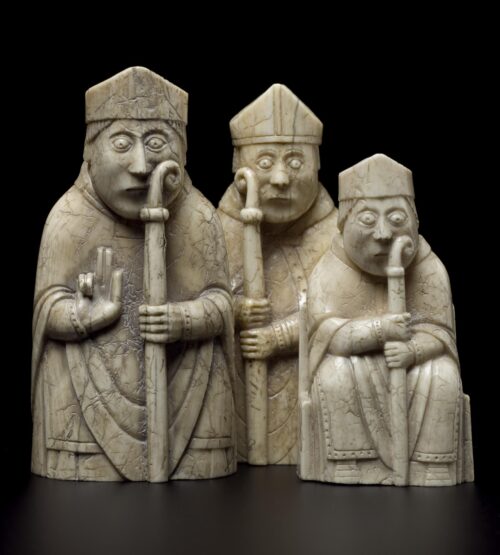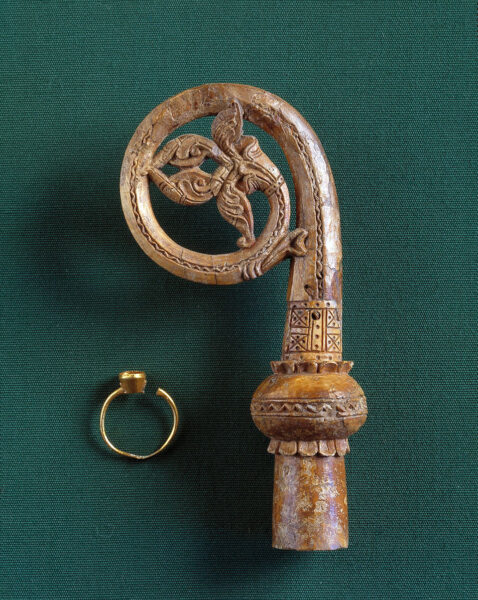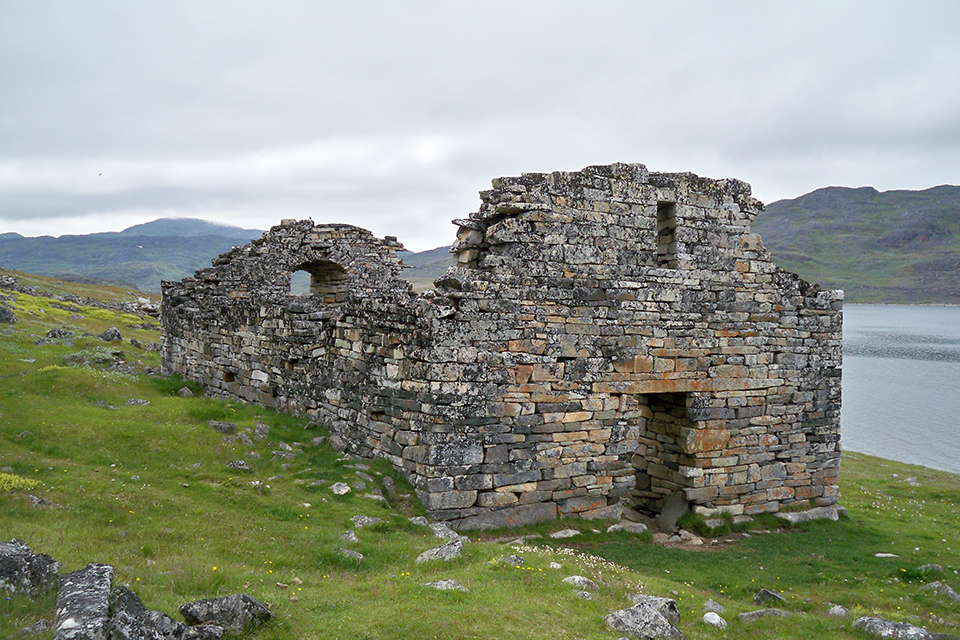Why did the Norse in Greenland upend their settlements in the late 15th century? A new explanation refers to their culture and way of life inherited from 9th century Viking Society.
The last Norse settlements in Greenland were abandoned in the 15th century. But why did the Norse disappear from Greenland? Was the final leaving caused by climate deterioration? Hostilities between the Norse people and the migrant Inuits? The depletion of the primary export articles: walrus ivory and hides for ropes? Or the fragile communication with the wider world following the Black Death?
Archaeological excavations and scientific explorations of climate upheavals and changes in the world economic system c. 1000–1450 continue to improve our understanding of these events. Recently, a rethinking of the history of the Norse settlements points to another explanation: the cultural construction of the Norse. Old habits, originally brought from Iceland, seem to have died hard.
The Walrus Trade

Around AD 985, Norse settlers from Iceland arrived in Greenland. Since AD 880, settlers in Iceland had hunted the local walrus population to near extinction, and Likely, the main impetus was to exploit the seasonal walrus hunting in the Disko Bay. Valuable commodities in Europe, the ivory and other Arctic exotica like narwhal teeth and the hides of walruses used for rope were avidly sought by magnates and elites all over Europe. Although the qualities of the walrus tusk differed from the more impressive elephant tusk, the valuable Arctic rostra were avidly sought out by craftsmen working out of first Trondheim, Bergen and Dublin and later Sigtuna, Novgorod, Schleswig and Cologne. From these centres, impressive carved ornaments – from crosses and altars to chessmen and oliphants – spread across the continent. However, more provincial artists known for their work on antlers and bone might also experiment if they came across the occasional piece of ivory in the market. One of the more treasured articles was the chessmen. The hollow character of the walrus tusks was better suited to provide material for these than the more massive elephant tusks imported through Islamic commercial centres located in Andalusia or further south.
In 2019, a group of scientists published a study of the serial depletion of these animals in the Davis Strait and the Baffin Bay, arguing that the abandonment of the Norse colonies was a direct consequence. According to archaeological material – aDNA, isotopes and zooarchaeological remains – they found that during the period of the settlements from ca. AD 985 – 1420, the preserved rostra tended to shrink over time. Also, the rostra preserved from the later Middle Ages derived from females living further north in the Baffin Bay. They concluded that the Norse hunters in the later Middle Ages were forced to travel further and further north to hunt for their prey. At the same time, the climate deteriorated after the end of the thirteenth century, making the season shorter and the sailing and hunting expeditions gradually more lengthy and risky. Ultimately, the Norse hunters also came into contact with the Innuits from Thule, with whom some (more or less friendly) trading contacts were definitely established. Thus, involving a “third” party may have created a more volatile and fragile trading position. Eventually, the profitable trade ended, and the Norse settlers left Greenland in the 15th century.
Although Barrett and his team acknowledge the significance of the shifting parameters of the trading system marked by the deterioration of shipping following the Black Death, the explanation offered in 2019 was perhaps somewhat simplistic. In short, they concluded that the depletion of the main product led to an economic bust furthered by the growing import of ivory from Africa following the Spanish conquest of Andalusia and the Portuguese colonisation of the African West Coast in the 15th century.
New and more full explanation?

However, recently another group of scholars and scientists have offered a more fully rounded explanation as to why the Norse dissappeared from Greenland, pointing to the role of what we might term the cultural sclerosis of the ancient Norse way of life.
To grasp their arguments, a short recapitulation of the history of the settlements is required. In the last decade, careful surveys of the landscape and carbon dating have provided us with a precise account of the events. According to this, the initial settlement occurred on the southern coast of Greenland in the present-day Kujalleq district, followed by a settlement at present-day Nuuk between AD c. 985-1160 – later called the Eastern and Western settlements. These habitations exploited the fertile grasslands in the fjords and inlets, building a subsistence economy based on husbandry – sheep, goats and cattle – combined with some intensive farming of fertilised and irrigated plots near the farms. Added was caribou hunting as well as sealing and whaling. For export reasons, walruses were avidly sought.
From the beginning, Christianity was practised by the Norse Greenlanders as witnessed by their early churches and graveyards, and in AD 1123, Greenland acquired their own bishop in a trade with the Norwegian king. The price was a polar bear. Ca. 1160-1300 the bishopric at Garðar became a significant player in the organisation of Greenland and its contacts with the wider world. With its stone cathedral and the adjoined manor, Greenland was, together with Iceland, finally drawn into the orbit of the kingdom Norway in the 13th century. At this point, the trade in walrus was dominant in the ivory market in Europe. During this period, the larger chieftain farms in Greenland became prosperous, as signified by their farm churches built of stone and fitted with bells and stained-glass windows. Also, their clothes followed the fashions dictated in the major civilised hubs in England, France and Italy. By 1300 Greenland was not only sporting a bishopric but also a monastery and nunnery, royal agents, trading posts and workshops. Comparing Greenland with Iceland, it has been suggested that Greenland was more socially stratified, with the chieftains’ farms able to stable between 25 and 65 cattle in their byres (the largest byre sported by the bishop). It appears that at the core of the Norse settlements in Greenland were the large farms of the Viking chieftains complete with their full households, home churches and a subsistence economy based on livestock parred with a specialised trade product marketed to the centres of Europe.
In 1257, however, the devastating volcanic eruption in Indonesia of the Samalas led to a worsening of the weather condition. Increased ice covers, drifting ice and an increasing number of storms significantly contributed to the hardship of living in Greenland. This contributed to the growing infrequency of trading vessels calling the settlements post-1348. Soon, the upkeep of livestock was abandoned rapidly, while the settlements contracted to the more protected inner zones of the fjords. One of the consequences was a marked shift in diet based on a pastoral economy to one based on seals. Another change may be detected in the density of weaving in the 14th century, when the Norse began to produce warmer and more weather resistant garments.
Thus, at first, it appears as if Greenland society showed remarkable resilience and a distinct capability to overcome the harsher conditions post 1300-hundred by abandoning the northern settlements and changing the diet and customs significantly.
“Nonetheless, it is evident that, in one way or another, they lost their battle for survival”, writes Rowan Jackson and his team. Considering all the evidence of a marked drive to adapt and exploit the new situation, the question remains: why did they finally give up?
The explanation offered by Jackson and his team show that at some point, the Norse people must have reached the limit of their will to transform their way of life. Ultimately, they might have transformed themselves into hunters and gatherers operating out of the specialised marine shielings, and, thus, finally upending their pastoral lives. The fact remains, however, that they did not choose this exit. Instead, they clung for some time to their sedentary, pastoral and Christian way of living, which they had carried with them from Norway to Iceland and further west since c. 850. Inside this cultural framework, “rational subsistence strategies” were only spuriously adopted. In the end, they chose another route, that of migration.
In conclusion, the cultural outlook – the Norse worldview or culture – hindered the more rational and adaptive process offered by the changes in the physical and geo-political landscape, leaving the Greenlanders with the only option to upend their settlements while migrating to milder and friendlier shores.
FEATURED PHOTO:
The Hvalsey Church in Greenland. The last written testimony to the existence of the Norse settlements was recorded in the form of a marriage between Thorstein Olafsson and Sigrid Bjørnsdottir at Hvalsey, on of twelve to fourteenth churches located at Hvalseyjar Fjord in the Eastern Settlement in the deep south. Source: Wikipedia/Number57 CCBYSA
SOURCES:
Was it for walrus? Viking Agesettlement and medieval walrus ivorytrade in Iceland and Greenland
By Karin M. Frei, Ashley N. Coutu, Konrad Smiarowski,Ramona Harrison, Christian K. Madsen, Jette Arneborg,Robert Frei, Gardar Guðmundsson, Søren M. Sindbæk,James Woollett, Steven Hartman, Megan Hicks and Thomas H. McGovern
In: World Archaeology 2015
Ecological globalisation, serial depletion and the medieval trade of walrus rostra
By James H. Barrett, Sanne Boessenkool, Catherine J. Kneale, Tamsin C. O Connell and Bastiann Star.
I: Quaternary Science Reviews, Volume 229, 1 February 2020, 106122
https://doi.org/10.1016/j.quascirev.2019.106122
Success and Failure in the Norse North Atlantic: Origins, Pathway Divergence, Extinction and Survival
By Rowan Jackson, Jette Arneborg, Andrew Dugmore, Ramona Harrison,
Steven Hartman, Christian Madsen, Astrid Ogilvie, Ian Simpson,
Konrad Smiarowski, and Thomas H. McGovern
In: Perspectives on Public Policy in Societal-Environmental Crises What the Future Needs from History.
Ed by: Editors Adam Izdebski, Piotr Filipkowski and John Haldon
pp. 247 – 272
READ MORE:



